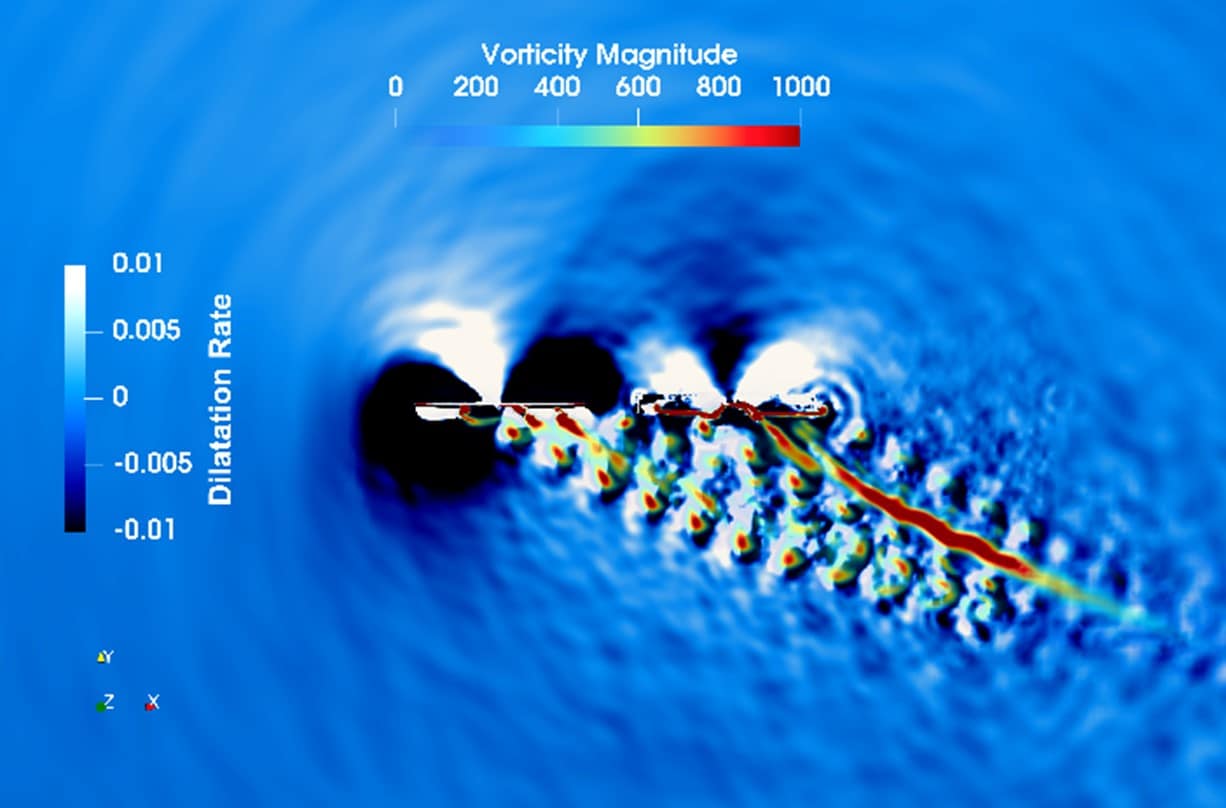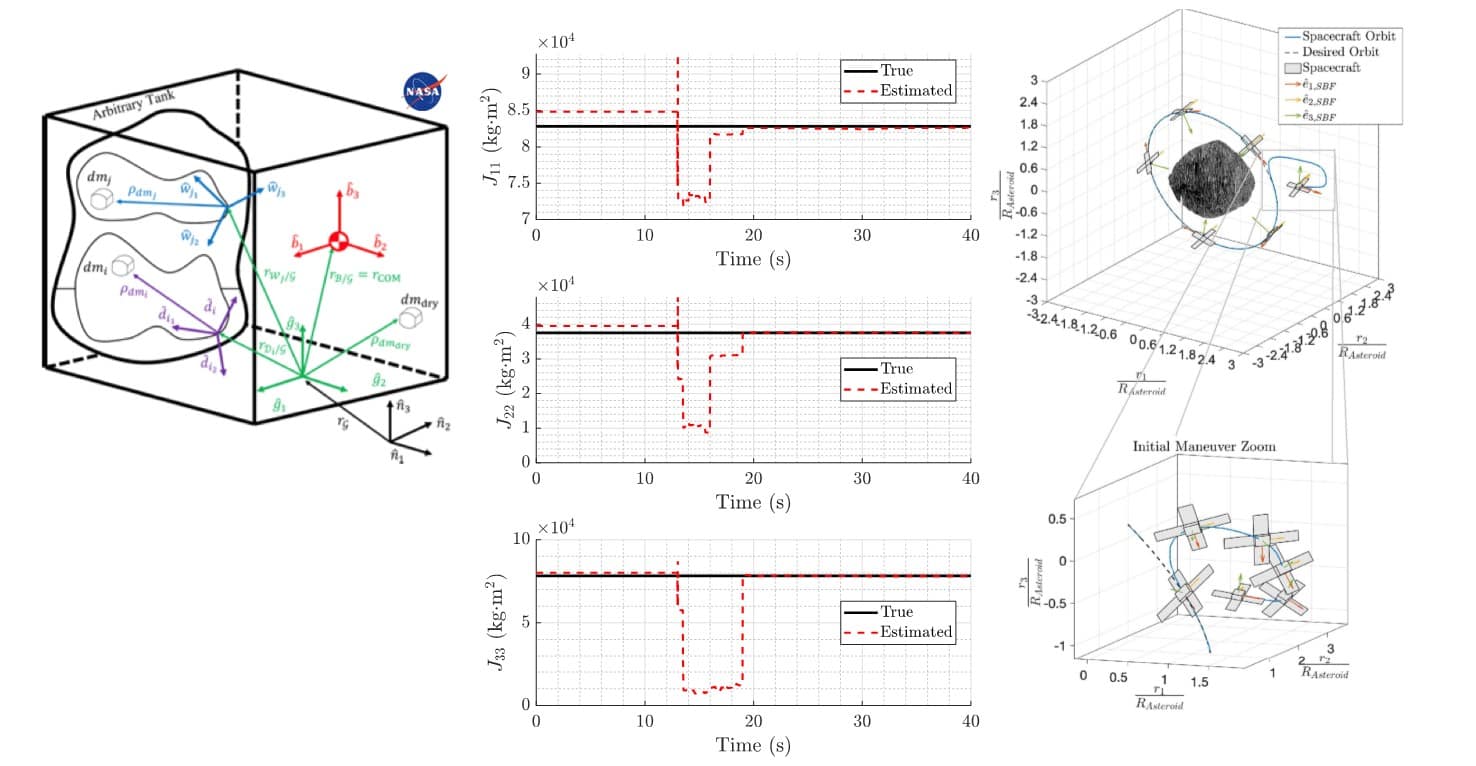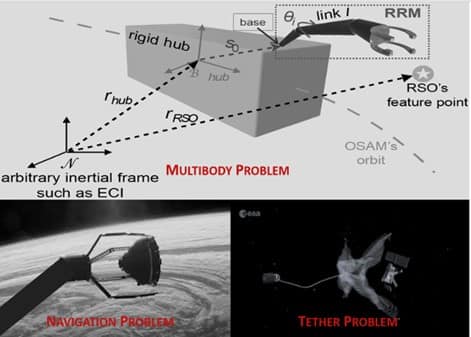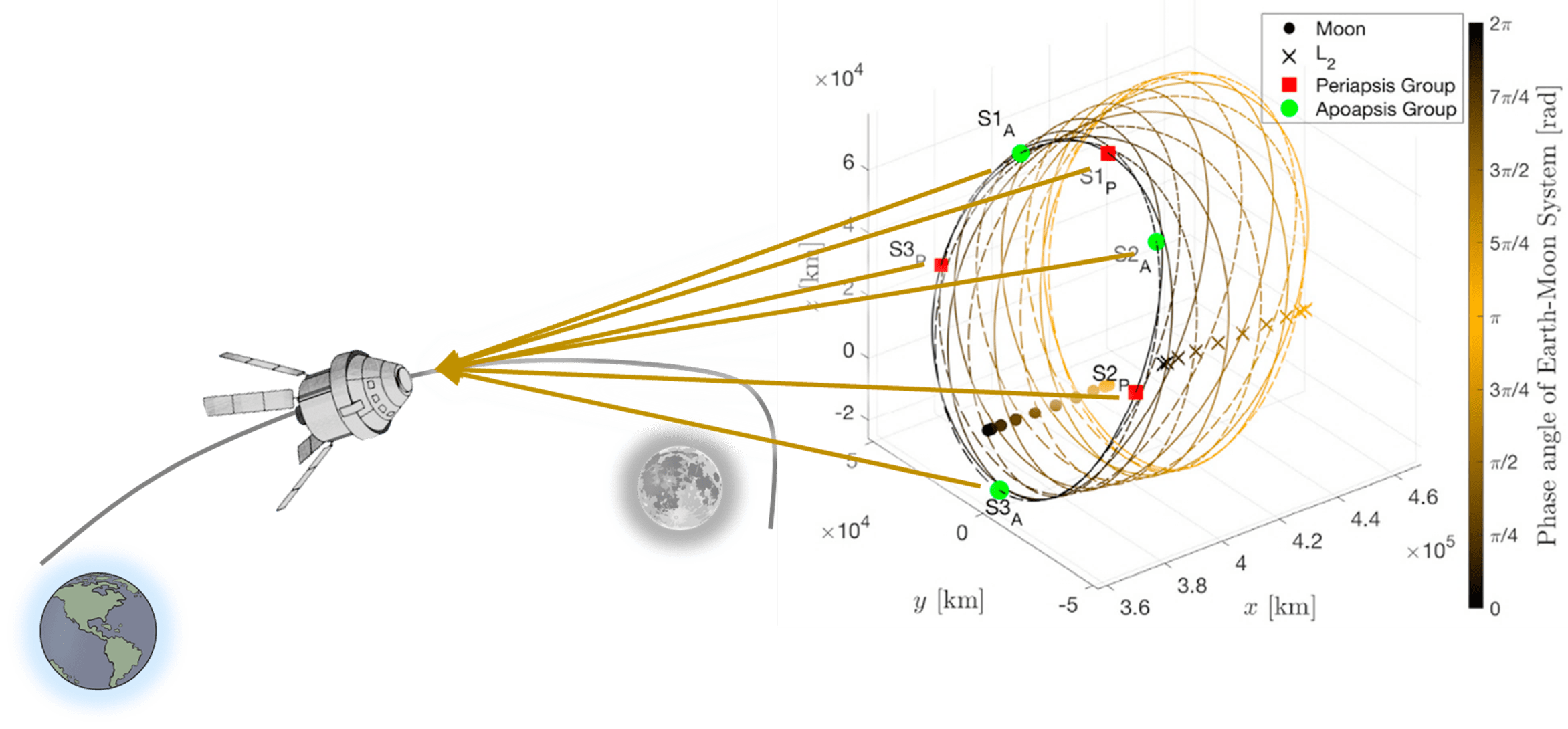Funding Agency: NASA
PIs & Co-PIs: Golubev, Lyrintzis, and Mankbadi
Description: Computer Simulations of Aerodynamics & Noise Associated with Urban Air Mobility (e. g. Quadcopters)
Level/Restrictions: PhD
Knowledge and Skills Needed: Experience with CFD
How to Apply (Faculty Contact): Reda.Mankbadi@erau.edu

Funding Agency: NASA
PI: Morad Nazari
Co-PIs: Richard Prazenica and Troy Henderson
Description: This research project will continue the development of an special Euclidean (SE(3)) - based rigid body pose estimation scheme for unknown moments of inertia in a spacecraft from the successful implementation of a Phase I modeling framework. The specific objectives include the following:
- Optimizing rendezvous, proximity operations and docking (RPOD) for a trash-filled logistics vehicle
- Rapid calculation of slosh dynamics in the upper stage of a launch vehicle. The research includes analytical demonstration of the RPOD and slosh applications in a proof-of-concept simulation environment. This estimator design will a) account for translation / rotation coupling, b) avoid singularity or non-uniqueness issues, c) gain high level of convergence, and d) account for system uncertainties.
Level/Restrictions: 2 PhD positions open (US Citizens Only)
Knowledge and Skills Needed: Background in nonlinear estimation and Kalman filter design, differential geometry, spacecraft attitude dynamics, and astrodynamics is highly preferred.
How to Apply (Faculty Contact): If you are interested in any of the positions above, please send me your CV, transcripts, and list of your previous publications via email to nazarim@erau.edu

Funding Agency: US Air Force
PI: Morad Nazari
Co-PIs: Kadriye Merve Dogan, and Thomas Alan Lovell
Description: A new era of affordable space flight, satellite refueling, on-orbit inspection, orbit transfer, end-of-life servicing, has begun as a result of the space industry's continued focus on safe, resilient, and adaptable space vehicles. These developments have laid the groundwork for assembly and manufacturing in orbit or space for potential use in active debris removal, reuse, and recycling of materials. Advanced navigation and control technologies are required to ensure and lengthen the mission life cycles of these orbital assets, which include launch vehicles, satellites, and space stations. Orbit/attitude determination, relative motion, robot manipulator kinematics, and spacecraft rendezvous/docking can benefit from new advances in geometric mechanics Udwadia-Kalaba, adaptive control, learning, sensor fusion, computer vision, and data communication. These efforts aim to equip future enterprises with the ability to perform in-space servicing and maintenance (ISAM) and on-orbit servicing and maintenance (OSAM) of failed or damaged space assets, as well as in-space manufacturing and platform assembly. However, the ability to validate individual hardware and software components of these technologies on a large scale is still in its early stages. Thus, the goal of this research is to establish an effective experimental testbed for the validation of autonomous ISAM / OSAM systems.
Level/Restrictions: 2 PhD positions open
Knowledge and Skills Needed: While having a background in any of the fields of robotics, differential geometry, spacecraft attitude dynamics, and astrodynamics is preferred, applicants with general nonlinear dynamics and control background are also encouraged to apply.
How to Apply (Faculty Contact): If you are interested, please send me your CV, transcripts, and list of your previous publications via email to nazarim@erau.edu

PI: Dr. Hao Peng
Description: The cislunar region (the space between Earth and the Moon and around them) is the focus of deep space exploration in the next decade. To support a long-duration mission, spacecraft need to have more autonomy than what they currently have. Recall that how crucial the GPS system is to our everyday life now. In the near future, a GPS-like positioning system in the cislunar region will be indispensable for all sorts of cislunar activities. Even though there is no immediate need from current missions, researchers have explored the usage of CR3BP for such a navigation system and found many difficulties due to the unstable nature of CR3BP. Our study using the rich dynamic characteristics in ER3BP for such a positioning constellation design is novel. Our research in this direction will bring some fresh ideas and options to this area.
Level/Restrictions: 1 PhD GRA; Multiple MS with potential GTA.
Knowledge and Skills Needed:
Must-haves:
- Strong interest in space exploration
- Strong self-learning capabilities
Preference will be given to students who:
- Are organized and self-motivated
- Practice knowledge and time management, such as Zettelkasten and GTD
- Have good communication and presentation skills.
Preferred knowledge includes: Astrodynamics and Attitude Dynamics, Numerical Optimization, Optimal Control Theory, Estimation Theory, Analytical dynamics
Machine Learning, Statistics Learning, Hardware Skills, etc.
How to Apply (Faculty Contact): If you are interested, contact hao.peng@erau.edu with CV and paragraph explaining your interest in this research.

PI: Dr. Hao Peng
Description: Mega-constellation is a big trend in satellite communications. Starlink now has more than 3,000 satellites on orbit and more are being launched in a rapid pace. Meanwhile, space situational awareness (SSA) area is highly interested in using space-based optical or radar sensors to track all the resident space objects (RSOs). Due to the close proximity and less atmosphere interference, space-based sensors are expected to improve the overall SSA ability. However, no mega-constellation is built or designed for the SSA purpose. Our research will fill the gap between matured mega-constellations and SSA, including the related orbital dynamical problems, sensor allocations, mission software and hardware requirements, expected outcomes, etc.
Level/Restrictions: 1 PhD GRA; Multiple MS with potential GTA.
Knowledge and Skills Needed:
Must-haves:
- Strong interest in space exploration
- Strong self-learning capabilities
Preference will be given to students who:
- Are organized and self-motivated
- Practice knowledge and time management, such as Zettelkasten and GTD
- Have good communication and presentation skills.
Preferred knowledge includes: Astrodynamics and Attitude Dynamics, Numerical Optimization, Optimal Control Theory, Estimation Theory, Analytical dynamics
Machine Learning, Statistics Learning, Hardware Skills, etc.
How to Apply (Faculty Contact): If you are interested, contact hao.peng@erau.edu with CV and paragraph explaining your interest in this research.
PI: Dr. Hao Peng
Description: This project will make use of reinforcement learning (RL) techniques and empower the satellite with surviving ability from catastrophic loss. The two major concerns here are still the power supply from solar panels and the communication from antenna, which both rely on a correct attitude and pointing. One appealing feature of this project is that the eventual output will be a general method that can fit any missions. The only requirement will be a computational unit for real-time training which may be already available on modern satellites.
Level/Restrictions: 1 PhD GRA; Multiple MS with potential GTA.
Knowledge and Skills Needed:
Must-haves:
- Strong interest in space exploration
- Strong self-learning capabilities
Preference will be given to students who:
- Are organized and self-motivated
- Practice knowledge and time management, such as Zettelkasten and GTD
- Have good communication and presentation skills.
Preferred knowledge includes: Astrodynamics and Attitude Dynamics, Numerical Optimization, Optimal Control Theory, Estimation Theory, Analytical dynamics
Machine Learning, Statistics Learning, Hardware Skills, etc.
How to Apply (Faculty Contact): If you are interested, contact hao.peng@erau.edu with CV and paragraph explaining your interest in this research.
PI: Dr. Yue Zhou
Description: Dr. Yue Zhou joined the Aerospace Engineering Department at Embry‑Riddle in 2023 Fall. She received her Ph.D. in Industrial and Systems Engineering from the State University of New York at Binghamton in June 2023. Her research focuses on laser-based additive manufacturing of metals and composite materials, including process development, in situ process monitoring, multiscale material characterization, and numerical modeling. Dr. Zhou has over 15 publications including journal articles and conference proceedings. She is also a member of AIAA, IISE, ASME, and SME. She is actively looking for graduate students to join her group.
Level/Restrictions: One fully-funded Ph.D. position, One Master student for research (Financial support for outstanding student)
Knowledge and Skills Needed:
- Passion for research, self-motivation, and love for life
- Good academic writing and communication skills
- Strong hands-on ability
- BS or MS degree in material science, mechanical engineering, aerospace engineering, or other related majors.
- Previous research experience in material science, manufacturing, or numerical modeling is preferred (Publication record is a plus)
How to Apply (Faculty Contact): If you are interested, please send your CV and transcripts to Dr. Zhou (zhouy@erau.edu) with a subject ‘PhD/Master Application for Spring/Fall 2024’.
